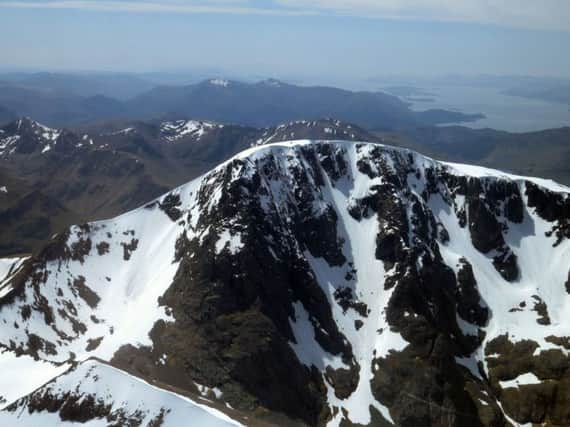Call to save Ben Nevis weathermen's work from over 100 years ago


The Victorian researchers were stationed in a specially-built observatory on the 1,345m-high summit of Ben Nevis between 1883 and 1904, with summer guests at the tiny Temperance Hotel next door their only neighbours.
For more than 20 years they measured temperature, pressure, rainfall, sunshine, cloudiness, wind strength and wind direction every hour, day and night, 365 days a year. The results were compiled in five hefty volumes, published between 1890 and 1910.
Advertisement
Hide AdAdvertisement
Hide AdNow modern-day scientists are appealing for help to save these important historical weather records, which they believe could help shed light on the changing climate and future weather in Scotland.
They are calling for people in Scotland to help digitise the vast archives, so they can be accessed easily and compared with more recent statistics.
It is hoped the project, Operation Weather Rescue: Ben Nevis, will be completed in the next two months – in time for a special event organised by the UK Natural Environment Research Council (NERC), the country’s key funding body for environmental science.
Project leader Professor Ed Hawkins, of the National Centre for Atmospheric Science and the University of Reading, said the information will fill knowledge gaps and provide a baseline for measuring changes in the weather.
He said: “The fastest way to collect new weather observations is by looking back in time. Unearthing this type of data feeds into the bigger picture, helping international researchers understand climatic changes and make better forecasts for the future.
“The Ben Nevis weather data will tell us more about extreme rainfall, which is thought to be becoming more common in the UK. The logbooks also contain records of sightings of the Northern Lights. On top of this, using historical data to better understand mountain weather will be useful to mountain rescue agencies.”
Marjory Roy, a former superintendent at Met Office Edinburgh and author of the book The Weathermen of Ben Nevis, is also supporting the citizen science campaign.
Advertisement
Hide AdAdvertisement
Hide Ad“There is very little data from the top of any British mountains, and to have such complete detailed hourly observations is incredible,” she said.
“We are missing so much data worldwide that it is vital we start to uncover these hidden records and put them to use. They will be invaluable in helping us to better understand changes in our weather and the relation between sea-level weather and conditions on our mountain tops.
“The logs also reveal what life was like for the team on top of Ben Nevis. They were very hospitable to climbers who scaled the north face in winter, presumably because it meant someone new to talk to. In summer they had too many ‘tourist’ visitors, who could interfere with the work.
“They enjoyed when the snow built up around the building in the early winter and insulated it from the howling winds outside. At one point they even had a pet cat.”
NERC’s Julia Maddock added: “Rescuing old data is a way that everyone can help improve our modern understanding of weather.”
• Anyone who would like to take part can find details at www.weatherrescue.org